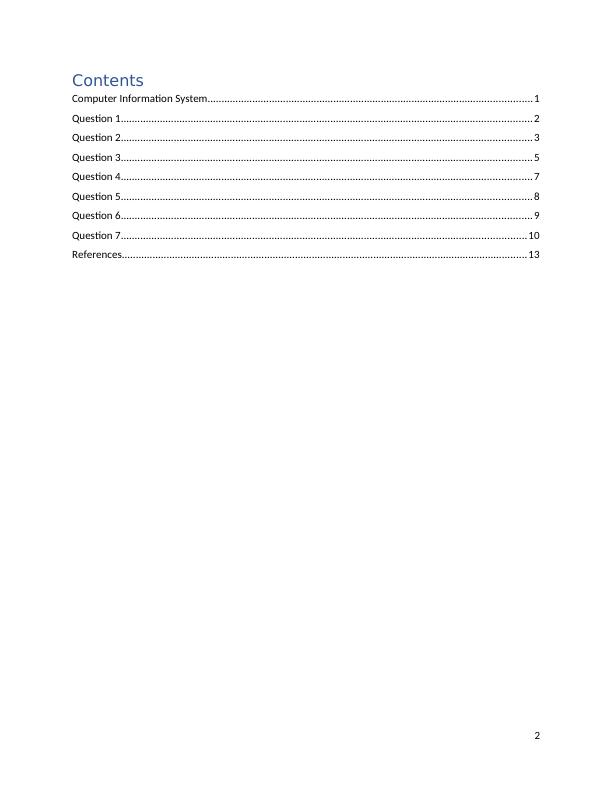Computer Information System
Assess, troubleshoot and document solutions to technical hardware, software, and networking issues in a small company's network.
16 Pages3961 Words61 Views
Added on 2023-04-21
About This Document
This document provides information about computer information systems, including topics such as MAC and IP addresses, network topologies, OSI and TCP/IP models, hardware and software management, and troubleshooting network issues.
Computer Information System
Assess, troubleshoot and document solutions to technical hardware, software, and networking issues in a small company's network.
Added on 2023-04-21
ShareRelated Documents
End of preview
Want to access all the pages? Upload your documents or become a member.
Understanding OSI Model, TCP, ARP and Network Design Topology
|3
|1210
|66
Computer Networks: Encapsulation, Switched Network, PPP, Modulation
|16
|2497
|343
LAN Architecture for Top Network Company
|11
|657
|77
Switching Engineering: LAN Switching, Design of Switching Security, and Ethernet Switching
|19
|4666
|64
Networking Analysis and Design Using Cisco Packet Tracer
|55
|7231
|108
BN106 Networking Fundamentals Each Virtual Private Network
|7
|1112
|154




